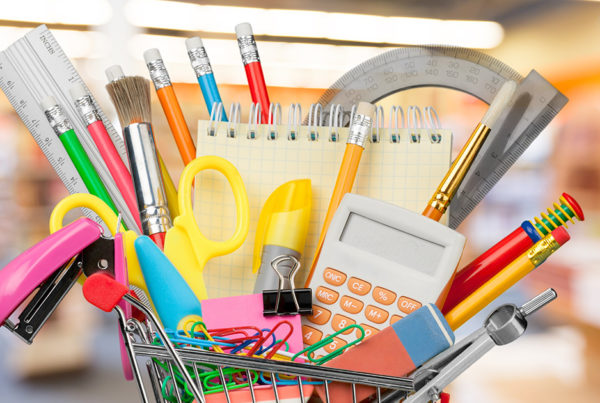For most of us, when we head to the store we are more likely to have plastic in hand than paper and metal. According to recent studies, about one-third of adults under the age of 50 don’t make a single purchase using cash in a typical week, but cash purchases still make up 31% of all consumer transactions, which means cash isn’t completely dead yet.
In spite of our increasing use of credit and debit cards, cash and change are still the most tangible way for kids to understand the value of money. And since they don’t see us using it as often, playing games can help kids of all ages learn about what those dollar bills and coins mean. Check out these activities and games to find some fun ways to help your kiddos learn about money.
For Toddlers and Preschoolers
- Start with the basics. Teach your kids how to identify and count different types of currency. Once they’re past the stage of putting everything in their mouths, make money magnets for your fridge. Glue some coins to craft magnets with some face up and some face down so kids can match the front and back. Or, have them “pay you” with a quarter when you get them a snack out of the fridge.
- Use puzzles to boost money memorization. Print out fake bills (you can find some here), then glue them to thin cardboard (like a cereal box) and cut them into puzzle pieces. As they put the pieces together, you can talk about the numbers on them and how five $1 bills add up to one $5 bill.
- Sort by color and size. Kids love to sort, so gather up your spare change and give them bowls or cups and have them put the coins into the right container. (Again, this one is best after they won’t try to eat the change!)
- Try a kids’ app for a fun reward. For a digital, on-the-go game with a little learning involved, try the free Counting Coins app (in the App Store for iPhone®). There are four modes: Match the Value, Make the Total, How Many Cents? and Show Values.
For Elementary-Age
- Set up your own grocery store. Kids love role-playing games like ‘house,’ so why not let them take YOU to an in-house store? If you don’t have the plastic assortment of fruits and vegetables, collect items from around the house or save clean food containers (like pasta boxes, oatmeal cartons and jelly jars). Help your child assign values to the items and then use play money (or some they color themselves!) to purchase and pay for the objects in their store.
- Break out the flash cards. Once kids start learning to add and subtract, you can get flashcards like Money Match Me. Some cards show the amount and some cards show the coins, and the cards can be used six ways for things like counting, matching and adding.
- Bring on the fun with board games. To get started on shopping and budgeting, the Buy it Right game helps kids identify money, learn its value and start recognizing that buying things costs money. It even includes concepts like getting money from an ATM, using coupons and giving gifts to friends.
- Try out a virtual piggy bank. Created by Visa®, Peter Pig’s Money Counter (on the App Store or Google Play store) is a free app that lets kids help Peter Pig count and sort coins. It encourages kids to save first, spend second, and as players answer correctly, they earn virtual money to save or spend in store (no actual money needed).
For Middle and High School Students
- Gather for some family game time infused with money lessons. While Monopoly is always a popular option, the focus isn’t necessarily on managing your money (not to mention it’s been banned at many family gatherings to help keep the peace). Pay Day may hit a little too close to home for adults, but the 45-year-old game looks a lot like real life with earning a salary, paying bills, taking out loans and building savings. At the end of the game, the winner must have the most money after paying off any outstanding debt (a good life lesson). There are other board games that go a lot deeper, including Act Your Wage, which encourages players to live debt-free and incorporates maintaining an emergency fund and using the envelope system to manage cash.
- Tap into apps for budgeting for real-life scenarios. While not a game exactly, Plan’it Prom (iOS and Android), helps students and parents plan and budget for prom to make sure you have a great night without breaking the bank. Visa® has developed a variety of apps to help older students learn about money. On Financial Football (iOS and Android), teens answer questions about money management to earn yardage and score points.
- Dive deeper with online resources. To take financial management to the next level, look into online resources like Chair the Fed and The Stock Market Game. The first lets you dive into monetary policy by taking charge of a simulated economy, and the second is part of a nationwide program that lets kids work together locally and virtually to understand personal finance and investing.






 Federally Insured by NCUA |
Federally Insured by NCUA |  Equal Housing Opportunity |
Equal Housing Opportunity |